 Kevin Whipps
.
August 03, 2023
.
F100 Builders Guide
Kevin Whipps
.
August 03, 2023
.
F100 Builders Guide

It seems that a lot of stories that truck guys tell follow a similar narrative. They start out as a mini-trucker, building a ride or two along the way. Then they get married, maybe have kids, and when their priorities shift, they stop building for a bit. Once the kids are in school and the cash is flowing more smoothly, they get back up on the horse and start building again. All of that applies to Jonathan Mansour of Rowlett, Texas, with one big difference: television.
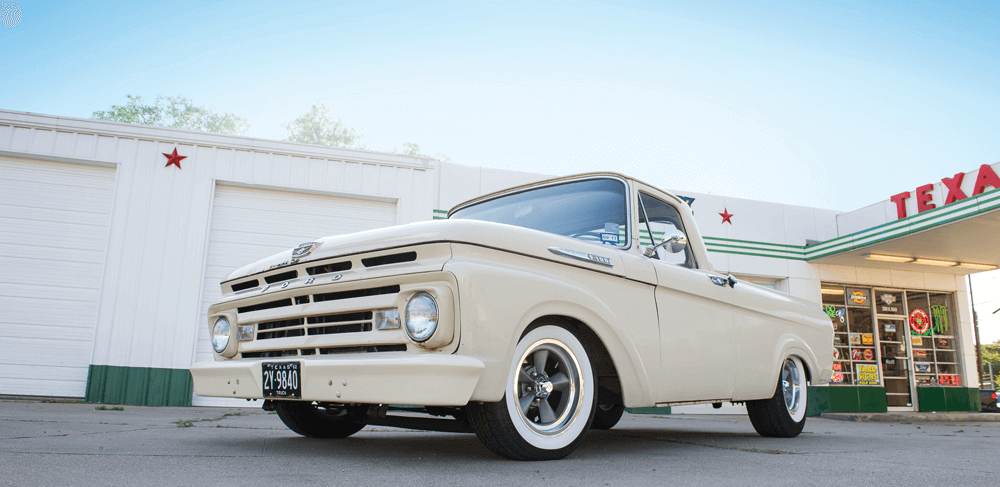
It’s not often that a former mini-trucker finds himself on TV, but that’s exactly what happened to Jonathan. As an employee of Gas Monkey Garage and long-time friend of Aaron Kaufman, he found himself on “Fast ‘N Loud,” which would be a surreal experience for anyone. When circumstances shifted and Aaron opened up Arclight Fabrication, Jonathan went with him, bringing his expertise in marketing to the new venture. With a fresh slate and new opportunities, he wanted to build something that would bring him back into the scene and help out the shop. Fortunately, he already owned it.
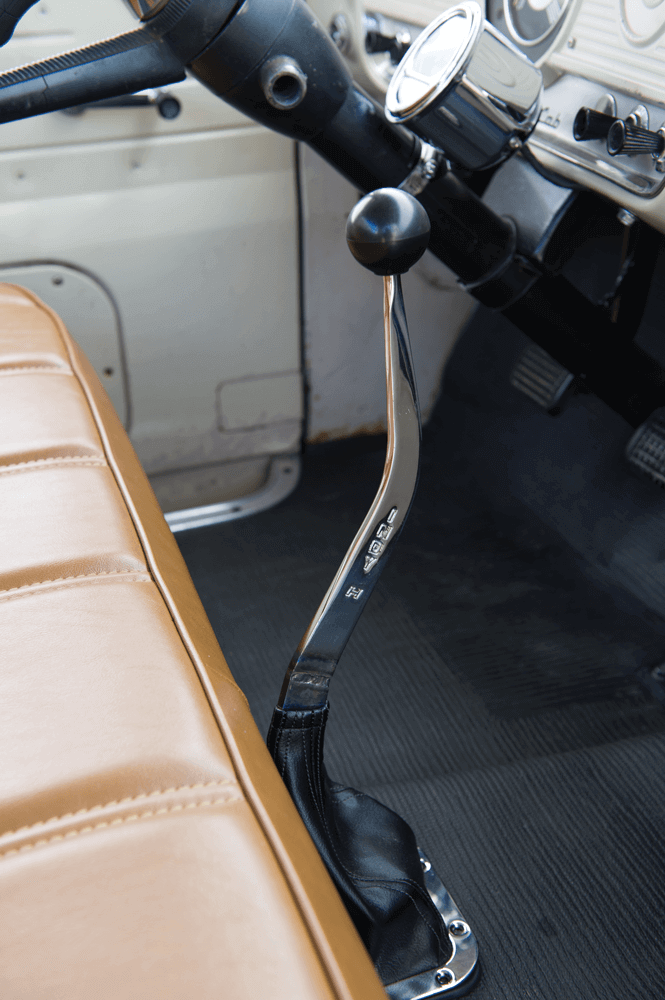
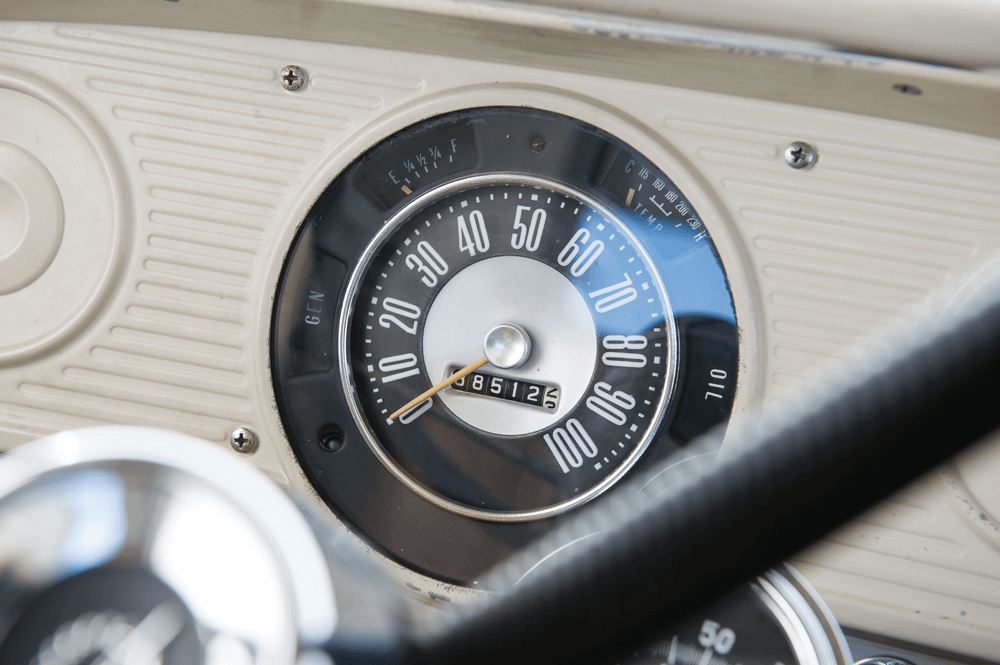
Jonathan has always loved unibody Fords, but they can be difficult to find. He spent years combing Craigslist and other online listing sites trying to find the perfect specimen before the right one popped up. In an interesting twist, it was only 4 miles away from his home.
Once the kids are in school and the cash is flowing more smoothly, they get back up on the horse and start building again.”
It was a ’62 Ford F-100 Unibody that had been purchased brand new off the lot and never touched. With the exception of a paint job in the ’80s to freshen up the finish, the truck was just driven and enjoyed for close to 40 years by the original owners, who then sold it to Jonathan. At the time, he was close to done with his ’98 Ford Ranger, and he wanted to move on to something else. But when the kids came, it was like a vacuum siphoned away his spending money, and the truck sat in his garage for around five years, never moving an inch.
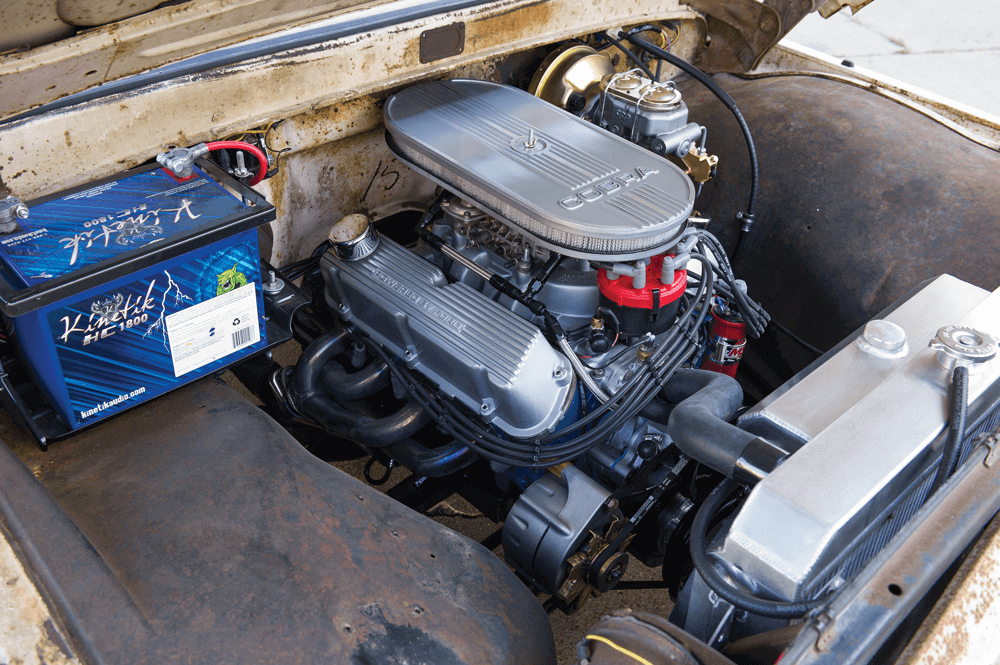
Eventually, Jonathan got tired of waiting, and he and Aaron started on Phase 1 of the build, which focused on getting the thing running relatively reliably, and bringing it down to the ground a bit. They installed a Nostalgia Sid’s drop axle paired with a mono-leaf. Aaron made a flip kit for the rear, and they left the drivetrain as-is. For 18 months that worked pretty well, but eventually the drum brakes and iffy motor became too much for Jonathan to deal with, so they decided to move on to Phase 2.
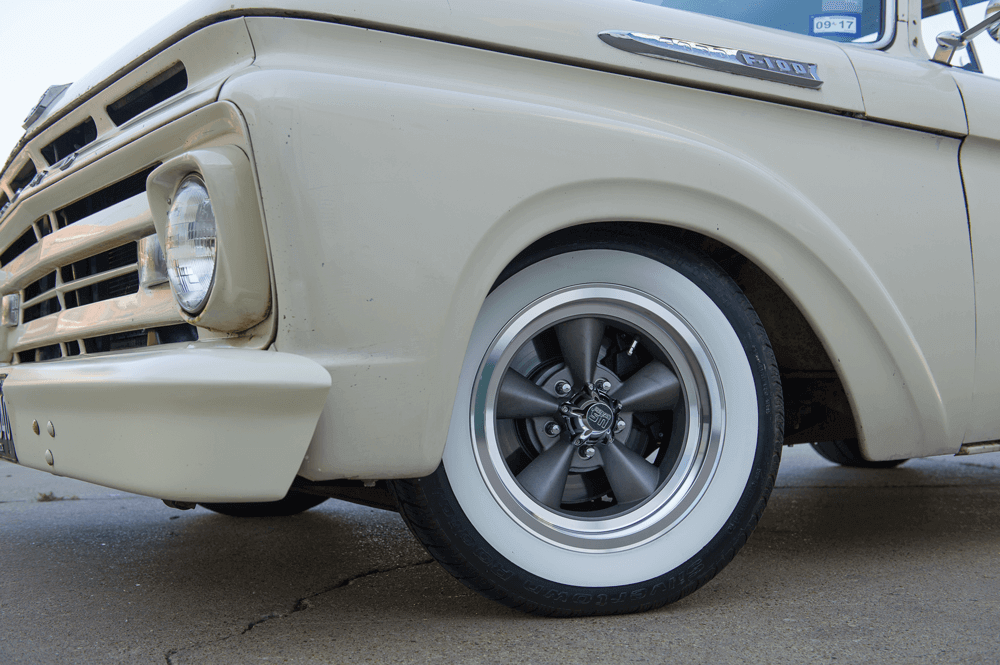
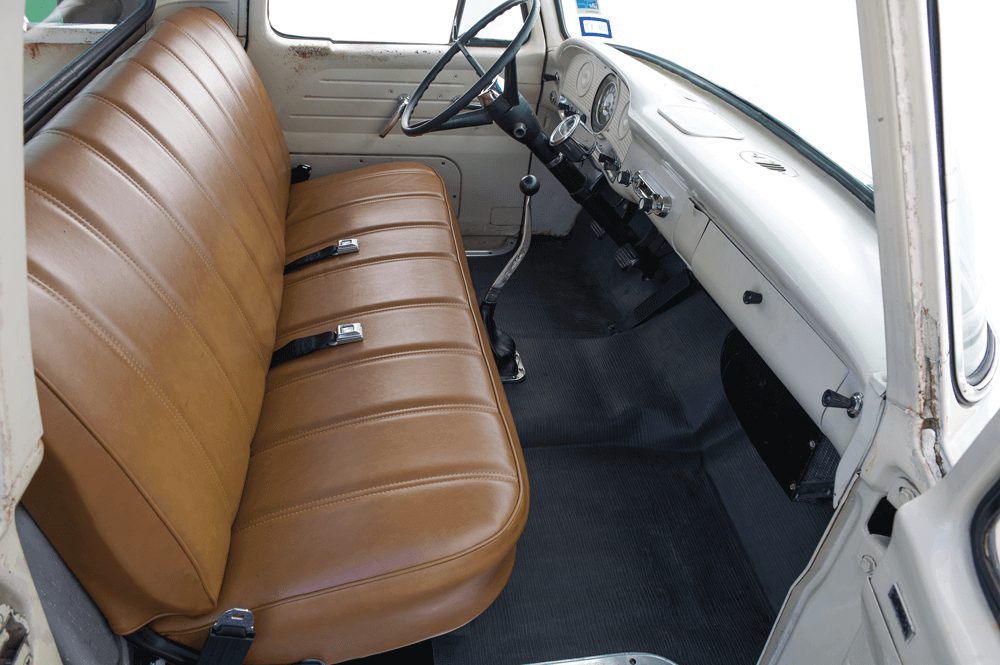
This time around it was all about power, both moving forward and stopping. The brakes were upgraded to disc with a CPP brake booster and master cylinder. Then the motor was swapped out for a Ford 302 that originally lived in Aaron’s Falcon and only had a few miles on it after its rebuild. Paired with a five-speed instead of the ancient three-on-the-tree manual, he had the ability to put the power to the pavement reliably and smoothly. It’s how the truck sits today, and it looks great.
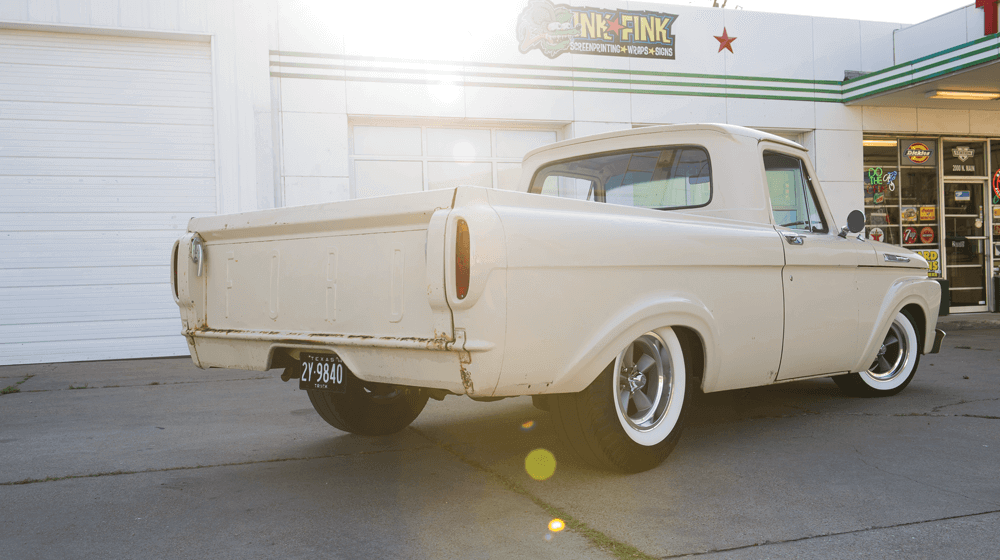
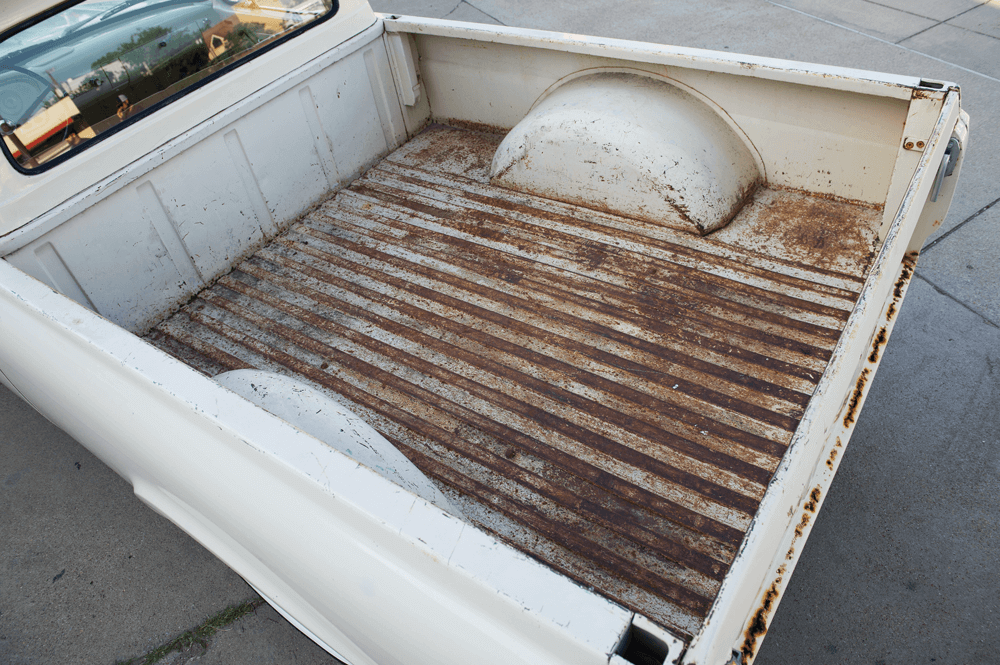
Of course, there is a Phase 3 in the works. One of the plans over at Arclight is to build parts for 1957-79 Ford trucks, particularly a full chassis kit for each model. One of the first that they’re going to build will sit underneath Jonathan’s unibody, and even though it’s going to be tight, the plan is to get both his and Aaron’s trucks done for LST in 2018. It’s a lofty goal for a new shop, particularly one that’s now going to have its own TV show. But if there’s anybody that can do it, the team at Arclight Fabrication can certainly pull it off.
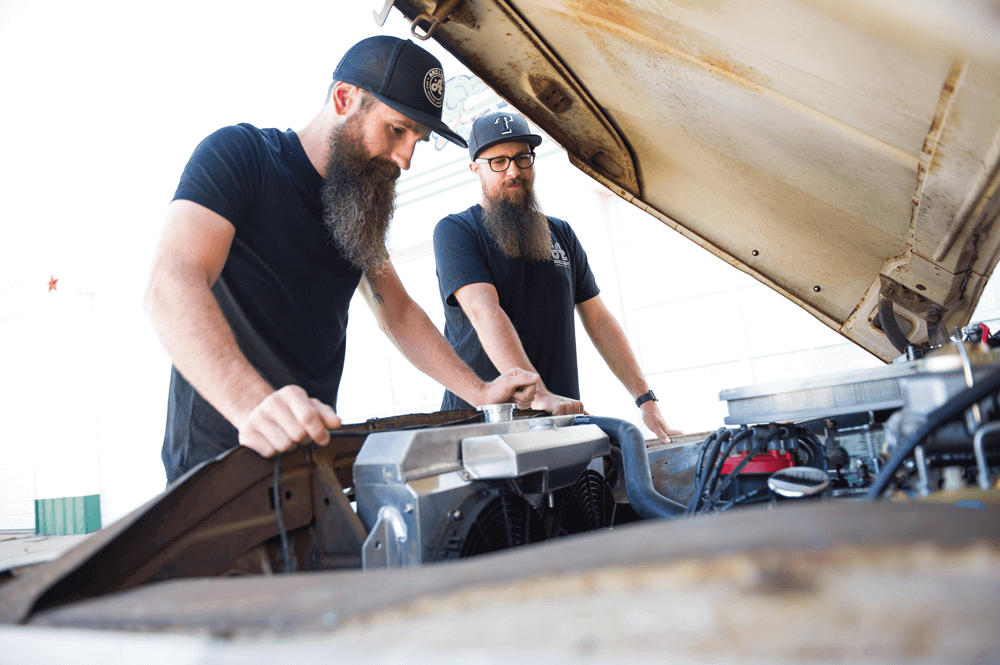
It seems that a lot of stories that truck guys tell follow a similar path, but they never end quite the same way. Jonathan and his ’62 have a bright future and some lofty goals to hit. If there’s one thing that’s sure, you can bet it’s going to be a fun ride.
[divider]TRUCK Specs[/divider]
OWNER
Jonathan Mansour
1962 Ford F-100
Rowlett, TX
ENGINE
CHASSIS & SUSPENSION
WHEELS & TIRES
BODY & PAINT
INTERIOR & STEREO
Special Thanks From the Owner: “I’d like to give a special thanks to my wife for the support and long hours during the build and for holding down the fort. The build wouldn’t have been possible without the help of my good friend, Aaron Kaufman. From parts around the shop from previous builds to the labor involved to make it happen, I couldn’t have done it without him.”
What related articles are suggested for further reading about similar vehicles and modifications?
Looking to dive deeper into the world of vehicle modifications and similar automotive builds? Here are some recommended articles that you might find interesting:
Explore how a classic pickup truck has been transformed with a powerful and modern V8 engine swap. This article highlights the intricacies involved in converting a vintage truck into a long-distance cruiser.
Discover the story behind a European sports car, enhanced with a robust American engine. This piece covers the challenges and triumphs of merging distinct automotive cultures to create a unique driving experience.
These articles offer detailed insights into vehicle transformations, engine swaps, and the blend of classic and modern automotive engineering. Enjoy reading!
What were the production changes made to the F-100 during its early years?
The fourth generation of the F-series trucks kicked off in 1961, marking the first significant redesign since 1953. This model introduced the “integrated-body” design, commonly referred to as the “unibody” truck. Unlike conventional trucks, the bed was not a separate part but merged into a single metal unit with the cab. This “unibody” construction increased cargo space and streamlined production costs by reducing the need for separate body panels.
However, the unibody design faced substantial issues. Stories began circulating about doors jamming when the truck was loaded and, worse, popping open when crossing rough terrain like railroad tracks. This body flex problem, exacerbated by rust over time, rendered the design unsuitable for heavy-duty tasks.
Due to these problems, 1962 saw Ford making swift changes. They started producing conventional-bodied half-ton and three-quarter-ton trucks mid-year. These new trucks utilized the box from the 1960 models, which didn’t align perfectly with the 1961 body lines but addressed the critical structural issues.
By 1963, Ford sold both the unibody and new conventional models side-by-side. The traditional body-on-frame models quickly became more popular, outselling the unibody versions by a margin of two-to-one. These conventional trucks retained the visual appeal but were more robust and practical, meeting the demands of users who needed a reliable work vehicle.
The F-100’s early production years were marked by a notable shift from an innovative but flawed unibody design back to a more traditional and reliable construction. These changes reflected the market’s need for durability and utility over aesthetic innovation.
What was the general design and purpose of early 1960s pickup trucks?
Early 1960s pickup trucks were primarily designed as utilitarian workhorses. These vehicles prioritized functionality over comfort, aiming to meet the demands of labor and transport. Their design reflected their primary role as tools for carrying heavy loads and enduring tough conditions.
In essence, the early 1960s pickup trucks were designed with a singular focus: to be reliable, hardworking vehicles capable of handling heavy-duty tasks with minimal concern for driver comfort or extended vehicle lifespan. Their primary purpose was utility, making them indispensable assets for industrial and agricultural work.
How has the role and design of pickup trucks evolved from the 1960s to 2020?
Pickup trucks have massively transformed over the past few decades. Initially designed purely as rugged workhorses, their role and design have shifted dramatically from the 1960s to 2020.
1960s:
2020:
1960s:
2020:
1960s:
2020:
In essence, today’s pickup trucks combine performance and luxury, offering features that were unimaginable in the 1960s. They have evolved from mere tools into multifunctional vehicles that cater to a wide array of needs and preferences.
What are some of the design elements that make the 1961 Ford F-100 visually appealing?
What Makes the 1961 Ford F-100 Visually Appealing?
The 1961 Ford F-100 has several distinct design elements that make it a standout in the realm of vintage trucks.
One of the first things you’ll notice is its flowing wheel arches. These curves accentuate the truck’s rugged yet sleek appearance, offering a balanced mix of strength and style.
The F-100’s unibody design is both innovative and visually pleasing. This seamless construction gives the truck a clean, cohesive look, eliminating the gap between the cab and the bed that you see in other models.
Another notable feature is the mid-body line. Initially designed to accommodate two-tone paint jobs, this line adds an extra layer of depth and character to the truck. It’s an eye-catching detail that sets the F-100 apart from other classic trucks.
While some might see surface rust and patina as defects, they actually contribute to the truck’s charm. These elements tell a story of six decades, adding authenticity and a certain timeless beauty that can’t be replicated with a new paint job.
These design elements collectively make the 1961 Ford F-100 an unforgettable sight, embodying both durability and aesthetic appeal.
What products are featured in the context of the 1961 Ford F-100 project?
Featured Products for Your 1961 Ford F-100 Project
Upgrade your ignition system with a high-quality ready-to-run distributor specifically designed for Ford 289/302 engines. Priced at $569.95, this component is essential for a reliable and efficient performance.
Maintain optimal engine temperature with a robust 4-row aluminum radiator. This part ensures superior cooling, perfect for high-performance driving. Details and pricing are available under Part# FB197.
Simplify your electrical system with a 1-wire alternator featuring a 140-amp capacity and a natural finish. This alternator is renowned for its efficiency and easy installation. Check it out via Part# 51243NG for more information.
Enhance your driving experience with a Blackjack short throw shifter. For $299.95, this shifter offers precise and quick gear changes, improving overall performance and driving pleasure. Add it to your cart with Part# 3916051.
Boost your engine’s output with a ceramic coated long tube header, priced at $546.95. This component provides increased exhaust flow, contributing to better horsepower and torque. Order now with Part# 32540FLT.
These carefully selected parts will elevate your 1961 Ford F-100 restoration or customization project, ensuring optimal performance and reliability.
What issues were encountered with the 1961 Ford F-100’s unibody design?
The 1961 Ford F-100 introduced a unibody design that initially seemed innovative but quickly proved problematic for many users. Owners began reporting issues shortly after the trucks hit the market.
These factors combined to make the 1961 unibody design a short-lived experiment, as it didn’t meet the durability and reliability standards expected for utility vehicles.
How does the 1961 Ford F-100 serve as a research and development vehicle?
The 1961 Ford F-100, often referred to as ‘Bozo,’ plays a crucial role in research and development for automotive innovations. Originally crafted by Aaron Kaufman’s Arclight Fabrication Co., this unibody pickup truck served as a prototype for advanced suspension kits. Today, it continues its legacy by undergoing rigorous testing to validate and refine new products.
In essence, ‘Bozo’ is more than just a historical vehicle; it’s a dynamic asset in advancing automotive technology.
Why did Ford decide to use an integrated-body design for the 1961 F-100?
Ford decided to adopt an integrated-body design for the 1961 F-100 primarily to streamline manufacturing and cut costs. By combining the bed and body into a single unit, they minimized the need for separate tooling and production steps associated with building multiple body panels.
This shift not only reduced manufacturing expenses but also allowed Ford to create a more spacious cargo area. The unified design provided a practical advantage in terms of increased cargo capacity, which was a significant selling point for customers relying on their trucks for heavy-duty tasks.
Additionally, this design distinguished the 1961 F-100 from competitors by offering a unique structural integrity and durability, further enhancing its appeal in the marketplace.
How did Ford respond to the problems with the F-100’s unibody design?
In response to the challenges posed by the F-100’s unibody design, Ford took several significant actions. The unibody construction, despite its appealing aesthetics and urban utility, failed to meet the rigorous demands expected from a truck. Owners anticipated a vehicle capable of enduring hard labor, but the unibody design didn’t quite measure up.
Recognizing this mismatch, Ford pivoted swiftly. By mid-1962, they began producing conventional-bodied half-ton and 3/4-ton trucks. These new models, though hastily assembled, featured the box from the 1960 series, despite some misalignment with the 1961 body lines. This transition was crucial in addressing the durability concerns voiced by their customer base.
The unibody trucks continued production albeit with diminishing popularity. By the end of 1963, these trucks were sold alongside the conventional models. The market clearly preferred the traditional design, as evidenced by the conventional models outselling the unibody trucks two-to-one. This shift underscored Ford’s commitment to adapting their designs in response to customer feedback and practical utility requirements.
What is the history and unique features of the 1961 Ford F-100 Unibody?
It was a ’62 Ford F-100 Unibody that had been purchased brand new off the lot and never touched. With the exception of a paint job in the ’80s to freshen up the finish, the truck was just driven and enjoyed for close to 40 years by the original owners, who then sold it to Jonathan.
But what makes the 1961 Ford F-100 Unibody truly fascinating is its place in automotive history. This model marked the beginning of the F-series’ fourth generation and was the first significant redesign since 1953. The term “unibody” is a bit misleading here; technically, it was an “integrated-body” truck. Unlike traditional trucks with separate cab and bed structures, this design featured a continuous piece of metal from the cab to the bed, set upon a traditional body-on-frame chassis.
Despite its innovative design, the “unibody” F-100 faced significant issues. Owners reported problems with doors jamming when the truck was loaded and even popping open while crossing uneven terrain. This body flex was unacceptable for a utility vehicle, leading to a decline in its popularity. By mid-1962, Ford began producing conventional-bodied trucks again, eventually phasing out the “unibody” by the end of 1963.
In summary, while the ’62 Ford F-100 Unibody owned by Jonathan has its charm and historical value, it also represents a bold but flawed chapter in truck design. This model’s story reflects both the innovation and the practical challenges faced by automotive engineers of the era.
What modifications and upgrades have been made to the Arclight-built 1961 Ford F-100?
Eventually, Jonathan got tired of waiting, and he and Aaron started on Phase 1 of the build, which focused on getting the thing running relatively reliably and bringing it down to the ground a bit. They installed a Nostalgia Sid’sdrop axle paired with a mono-leaf. Aaron made a flip kit for the rear, and they left the drivetrain as-is. For 18 months that worked pretty well, but eventually, the drum brakes and iffy motor became too much for Jonathan to deal with, so they decided to move on to Phase 2.
This time around it was all about power, both moving forward and stopping. The brakes were upgraded to disc with a CPP brake booster and master cylinder. Then the motor was swapped out for a Ford 302 that originally lived in Aaron’s Falcon and only had a few miles on it after its rebuild. Paired with a five-speed instead of the ancient three-on-the-tree manual, he had the ability to put the power to the pavement reliably and smoothly. It’s how the truck sits today, and it looks great.
A full Arclight Stage One suspension package was fitted, which includes power front disc brakes. This upgrade significantly improved the driving experience, offering a safer and more controlled ride compared to the original setup.
The original engine was long gone, replaced with a 340 horsepower Ford 302. This powerhouse is equipped with a high-performance carburetor and intake manifold, along with a hydraulic roller camshaft. The engine breathes through advanced cylinder heads and an ignition system that ensures optimal performance. Exhaust gases are expelled through stainless headers into a 2.5″ exhaust system, providing both efficiency and a throaty growl.
Managing this power is a Tremec T-5 five-speed manual transmission, which takes the grunt and moves it out to a fortified rear axle fitted with a locker unit and 3.70 rear gears. This combination gives the driver a satisfying surge of power when the throttle is applied, ensuring a thrilling driving experience.
Inside, the fully sound-insulated and carpeted cab offers a quiet and comfortable ride. Modern air conditioning has been seamlessly integrated into the original Ford “Polar-Aire” A/C unit, providing a touch of luxury. The wiring has been completely updated, eliminating any concerns about old, potentially hazardous electrical systems.
The truck rides on chromed steel wheels wrapped in BFGoodrich Silvertown whitewall tires, sized 215/65R15 in the front and 255/70R15 in the rear. These tires not only enhance the classic aesthetic but also ensure reliable traction and handling.
The combination of these modifications and upgrades has transformed the 1961 Ford F-100 into a well-rounded, high-performance vehicle. All they need to do is fire off that 302, shift into gear, and get moving. The results speak for themselves.
What is the significance of the Pikes Peak International Hill Climb for Aaron Kaufman?
Aaron Kaufman’s enthusiasm for the Pikes Peak International Hill Climb runs deep, as the event represents much more than just a race. Often called the “Race to the Clouds,” this challenging competition is the second oldest motorsport event in the United States. The course itself is remarkable, stretching over 12.42 miles with more than 156 twists and turns. It begins at Mile 7 on the Pikes Peak Highway and ascends a formidable 4,720 feet to a finishing altitude of 14,115 feet. This requires racers to tackle steep grades averaging 7.2%.
For Aaron, being part of this storied race—particularly in its centennial year, 2022—is an opportunity to test his skills on one of motorsport’s most demanding stages. It is a chance to compete in a historic event that has captivated racers and fans alike for over a century. The Hill Climb is not merely about speed; it is a true test of endurance, precision, and passion under extreme conditions. Being able to compete in such an iconic event marks a significant milestone in Aaron’s racing career, allowing him to push the limits of his own capabilities and his vehicle’s performance.
What YouTube resources are available for technical support and product information?
YouTube Resources for Technical Support and Product Information
Are you struggling to pick the right A/C system for your vehicle? YouTube channels dedicated to automotive systems offer detailed comparisons of various kits. You’ll find videos with side-by-side reviews, highlighting features, specifications, and performance metrics to help you make an informed decision.
Key Topics:
YouTube is also a treasure trove for technical support, providing countless “how-to” videos. Whether you’re a seasoned mechanic or a DIY enthusiast, step-by-step tutorials can guide you through installations, maintenance, and troubleshooting for your A/C systems.
Popular Playlists:
Some channels host Q&A sessions, live streams, and engage with viewers in the comments. This interactivity gives you access to expert advice and potential solutions for specific problems you might encounter with your system.
Channel Highlights:
By utilizing these YouTube resources, you can gain valuable insights and support for your automotive needs, all at your fingertips.
How can consumers compare different A/C kits to find the best option for their vehicle?
When shopping for the ideal A/C kit for your vehicle, understanding how to compare different options can save time and money. Here’s a guide to ensure you make an informed decision:
Begin by understanding your vehicle’s specific needs. Take note of the model, make, and any custom modifications. Consider whether the car currently has an A/C system or if it’s being installed from scratch.
Check the cooling capacity, usually measured in BTUs (British Thermal Units). Higher BTUs mean more cooling power, which might be essential in warmer climates.
Seek systems with high energy efficiency ratings to ensure they won’t place excessive load on your vehicle’s power system. This can lead to fuel savings over time.
Research third-party brands known for reliability and quality, such as Vintage Air or Classic Auto Air. Read customer reviews to understand common issues and long-term satisfaction.
Ensure the kit comes with a strong warranty and customer support. This can be vital if issues arise during installation or operation.
Some A/C kits offer plug-and-play simplicity, while others may require more intricate installation. Consider your mechanical skills or the cost of professional installation.
By following these steps, you’ll be able to compare A/C kits more effectively and choose the one that provides the best balance of performance, efficiency, and ease of installation for your vehicle.
What parts and upgrades are available for A/C systems?
When it comes to enhancing your vehicle’s A/C system, there’s a wide array of components and upgrades available to customize and optimize performance. Here’s a detailed breakdown:
Get model-specific A/C components designed for precision fit and performance:
Whether you’re upgrading or starting from scratch, these components offer everything you need for efficient and reliable A/C system performance tailored to your vehicle’s specific requirements.
What is Aaron Kaufman’s connection to automotive fabrication and television?
“It’s not often that a former mini-trucker finds himself on TV, but that’s exactly what happened to Jonathan. As an employee of Gas Monkey Garage and long-time friend of Aaron Kaufman, he found himself on ‘Fast ‘N Loud,’ which would be a surreal experience for anyone. When circumstances shifted and Aaron opened up Arclight Fabrication, Jonathan went with him, bringing his expertise in marketing to the new venture.”
Aaron Kaufman’s journey into the world of automotive fabrication and television is a testament to his passion and skill. From his early days working in a machine shop after high school, Aaron immersed himself in the art of metal fabrication, learning the ropes with minimal supervision. This hands-on experience laid the groundwork for his future ventures.
When television came calling, Aaron seized the opportunity to showcase his talents on a broader stage. His show, “Shifting Gears,” was a departure from traditional buy-sell formats, focusing instead on building vehicles for the sheer thrill of competition racing and creating memorable experiences. This innovative approach quickly gained traction, propelling the show’s popularity and allowing Aaron to build the cars of his dreams with ample budgets—albeit under the relentless pressure of TV deadlines.
Success came rapidly, marking a whirlwind period of building and racing, but after five action-packed years, Aaronchose to step away to pursue his own path. Reflecting on this chapter, he views it as an invaluable experience that packed a lifetime’s worth of car builds into a short span.
This blend of television exposure and deep-rooted fabrication expertise paved the way for Aaron’s next chapter, Arclight Fabrication—a venture that continues to push the boundaries of automotive creativity and innovation.
How did Aaron Kaufman’s career progress with television shows and automotive builds?
It’s not often that a former mini-trucker finds himself on TV, but that’s exactly what happened to Jonathan. As an employee of Gas Monkey Garage and long-time friend of Aaron Kaufman, he found himself on “Fast ‘N Loud,” which would be a surreal experience for anyone. When circumstances shifted and Aaron opened up Arclight Fabrication, Jonathan went with him, bringing his expertise in marketing to the new venture. With a fresh slate and new opportunities, he wanted to build something that would bring him back into the scene and help out the shop. Fortunately, he already owned it.
Aaron Kaufman’s journey in the television and automotive industry didn’t stop there. With the launch of his new show, “Shifting Gears,” Aaron shifted focus from the conventional buy-sell format to crafting vehicles meant for thrilling experiences. This new direction allowed him to explore the exhilarating world of competition racing, where the pressure to complete builds for events pushed his creative boundaries.
One such event is the renowned Pikes Peak International Hill Climb, also known as the Race to the Clouds. This race features a challenging 12.42-mile track with 156 turns and a climb of 4,720 feet, culminating at a breathtaking 14,115 feet above sea level. The 2022 event marked its 100th running, and Aaron was set to compete, showcasing his dedication and skill in such a prestigious race.
With each project and race, Aaron continues to cement his legacy in the automotive world, much like Jonathan aims to do with his marketing prowess at Arclight Fabrication. Their journeys intertwined, yet distinct, illustrate the dynamic nature of automotive innovation and the relentless pursuit of passion.
How does Aaron Kaufman’s current work align with his passion?
His current projects involve building vehicles for competitive racing, aligning with his passion for automotive challenges and innovation.
What significant event is Aaron participating in recently?
Aaron is competing in the 100th edition of the Pikes Peak International Hill Climb in 2022.
What is Aaron Kaufman currently involved in with respect to racing events?
He is actively participating in the Pikes Peak International Hill Climb, a challenging race known for its demanding course and elevation changes.
What was the focus of Aaron Kaufman’s show “Shifting Gears”?
The show emphasized building vehicles for unique experiences, shifting away from a traditional buy-sell approach, and focused on creating cars for competitions and events.
How have Ford’s unibody trucks influenced modern pickup truck designs?
Ford’s unibody trucks might not have been the triumph they were initially intended to be, yet their impact resonates through contemporary pickup designs. Although their production ceased quickly due to design flaws, they sparked a wave of innovation that has influenced how we think about trucks today.
While the unibody concept didn’t take off as expected, it laid the groundwork for future designs that merge strength with style. The focus on experimenting with design—and learning from those endeavors—continues to shape the cutting-edge trucks seen on roads today.
By understanding and adapting past innovations, manufacturers have been able to enhance safety, efficiency, and aesthetics in modern pickups, directly drawing inspiration from the unibody trucks of yesteryear. This blend of art and engineering showcases how previous trials can drive future successes in automotive design.
Why are unibody trucks popular in modern car shows despite their past issues?
Unibody trucks, initially overlooked when they first hit the market, have since surged in popularity, especially on the car show circuit. At their core, these vehicles offer a seamless, sleek look that’s highly coveted in today’s automotive styling. In the past, critics pointed out structural limitations and repair challenges. However, modern enthusiasts have embraced these trucks for several compelling reasons:
In summary, while unibody trucks may have faced hurdles in the past, they’ve found new life and eager fans among those who appreciate their distinct design and customization potential.
How does the unibody construction compare to traditional truck designs in terms of cost and manufacturing?
Ford decided to adopt an integrated-body design for the 1961 F-100 primarily to streamline manufacturing and cut costs. By combining the bed and body into a single unit, they minimized the need for separate tooling and production steps associated with building multiple body panels.
This shift not only reduced manufacturing expenses but also allowed Ford to create a more spacious cargo area. The unified design provided a practical advantage in terms of increased cargo capacity, which was a significant selling point for customers relying on their trucks for heavy-duty tasks.
By incorporating these elements, Ford not only achieved cost savings but also enhanced the truck’s functionality, making it an attractive option for consumers seeking both affordability and practicality in their vehicles.
How does the unibody construction affect usable storage area?
By integrating the bed and body into a single piece, the unibody design increases the amount of available storage space, providing more room for cargo.
How does the complexity of assembly compare between unibody and traditional designs?
The unibody approach simplifies the assembly process significantly, as it involves fewer pieces to fit together, making the overall construction less complicated.
What specific manufacturing steps are reduced with a unibody design?
The unibody design minimizes the need for multiple stampings, streamlining the manufacturing process by reducing the number of individual parts that need to be created and assembled.
Which models of Ford trucks were designed with a unibody construction?
The fourth generation of the F-series trucks kicked off in 1961, marking the first significant redesign since 1953. This model introduced the “integrated-body” design, commonly referred to as the “unibody” truck. Unlike conventional trucks, the bed was not a separate part but merged into a single metal unit with the cab. This “unibody” construction increased cargo space and streamlined production costs by reducing the need for separate body panels.
Ford’s unibody design was specifically applied to the two-wheel-drive F-100 and F-250 Styleside pickups produced between 1961 and 1963. This particular choice made them distinct from the Flareside pickups, which retained a more traditional cab-and-bed structure due to their design requirements. By 1962, Ford began offering non-unitized Styleside pickups even for two-wheel-drive models, indicating a shift back to conventional designs.
However, the unibody design faced substantial issues. Stories began circulating about doors jamming when the truck was loaded and, worse, popping open when crossing rough terrain like railroad tracks. This body flex problem, exacerbated by rust over time, rendered the design unsuitable for heavy-duty tasks.
Due to these problems, 1962 saw Ford making swift changes. They started producing conventional-bodied half-ton and three-quarter-ton trucks mid-year. These new trucks utilized the box from the 1960 models, which didn’t align perfectly with the 1961 body lines but addressed the critical structural issues.
By 1963, Ford sold both the unibody and new conventional models side-by-side. The traditional body-on-frame models quickly became more popular, outselling the unibody versions by a margin of two-to-one. These conventional trucks retained the visual appeal but were more robust and practical, meeting the demands of users who needed a reliable work vehicle. Additionally, all four-wheel-drive trucks throughout this period maintained their traditional cab-and-bed structure, highlighting the unibody’s limited application and reinforcing the necessity for robust, separate body components in heavier-duty models.
Did four-wheel-drive trucks have a unibody design?
No, all four-wheel-drive trucks maintained a traditional separate cab-and-bed structure.
Were there changes to the unibody design during its production run?
Yes, by 1962, Ford began offering non-unibody options even for the two-wheel-drive Styleside pickups, indicating a shift away from the unibody design.
Were all versions of these models unibody?
No, only the “Styleside” versions had a unibody design, while “Flareside” versions did not.
What years were these unibody models produced?
These models were produced from 1961 to 1963.
Which specific Ford truck models had a unibody design?
The F-100s and F-250s with two-wheel-drive were the models featuring a unibody design.
What is the legacy of Ford’s unibody pickup trucks?
Despite its innovative design, the “unibody” F-100 faced significant issues. Owners reported problems with doors jamming when the truck was loaded and even popping open while crossing uneven terrain. This body flex was unacceptable for a utility vehicle, leading to a decline in its popularity. By mid-1962, Ford began producing conventional-bodied trucks again, eventually phasing out the “unibody” by the end of 1963.
However, the legacy of these trucks extends beyond their initial shortcomings. Today, unibody pickups have found a devoted following in the custom hot rod community. Their sleek, seamless appearance makes them ideal candidates for custom paint jobs and modifications, which often highlight their distinctive design. Though not suitable for heavy hauling or towing, these trucks possess an undeniable aesthetic charm that appeals to collectors and car enthusiasts alike.
The unibody’s story is a testament to the era’s bold automotive experimentation. While the design was ultimately flawed, it sparked innovative ideas that influenced future truck models. These trucks are now rare collector’s items, especially those that have been preserved without rust. Their presence at auto shows underscores their unique place in automotive history.
In summary, while the ’62 F-100 Unibody owned by Jonathan has its charm and historical value, it also represents a bold but flawed chapter in truck design. This model’s story reflects both the innovation and the practical challenges faced by automotive engineers of the era. Despite its brief production run, the unibody design left a lasting impact, celebrated today for its visual appeal and historical significance.
What are Ford’s unibody trucks and when were they available?
The fourth generation of the F-series trucks kicked off in 1961, marking the first significant redesign since 1953. This model introduced the “integrated-body” design, commonly referred to as the “unibody” truck. Unlike conventional trucks, the bed was not a separate part but merged into a single metal unit with the cab. This “unibody” construction increased cargo space and streamlined production costs by reducing the need for separate body panels.
Ford’s unibody trucks were only available from 1961 to 1963, specifically on the F-Series “styleside” pickups. The idea was to create a seamless design where the cab and the bed formed one continuous piece. Despite the common term “unibody,” it’s important to note that the chassis and body were still separate, with only the gap between the cab and bed eliminated. Ford marketed these as “unitized,” which is a more accurate description.
However, the unibody design faced substantial issues. Stories began circulating about doors jamming when the truck was loaded and, worse, popping open when crossing rough terrain like railroad tracks. This body flex problem, exacerbated by rust over time, rendered the design unsuitable for heavy-duty tasks.
Due to these problems, 1962 saw Ford making swift changes. They started producing conventional-bodied half-ton and three-quarter-ton trucks mid-year. These new trucks utilized the box from the 1960 models, which didn’t align perfectly with the 1961 body lines but addressed the critical structural issues.
By 1963, Ford sold both the unibody and new conventional models side-by-side. The traditional body-on-frame models quickly became more popular, outselling the unibody versions by a margin of two-to-one. These conventional trucks retained the visual appeal but were more robust and practical, meeting the demands of users who needed a reliable work vehicle.
When were Ford’s unibody trucks available?
These trucks were available from 1961 to 1963 and were part of Ford’s F-Series styleside pickups.
What are Ford’s unibody trucks?
Ford’s unibody trucks are a design of the F-Series where the cab and bed form a single continuous piece, eliminating the gap typically found between them, although the chassis and body remain separate.
Why did Ford decide to make unibody pickups?
Ford decided to adopt an integrated-body design for the 1961 F-100 primarily to streamline manufacturing and cut costs. By combining the bed and body into a single unit, they minimized the need for separate tooling and production steps associated with building multiple body panels.
This shift not only reduced manufacturing expenses but also allowed Ford to create a more spacious cargo area. The unified design provided a practical advantage in terms of increased cargo capacity, which was a significant selling point for customers relying on their trucks for heavy-duty tasks.
Beyond manufacturing efficiency, Ford aimed to reach a different group of customers with this innovative design. They envisioned the unified styleside pickups appealing to a more suburban clientele, individuals who needed a vehicle that was both stylish and comfortable. The unibody design offered a clean, upscale appearance that set the F-100 apart from its competitors.
In terms of market differentiation, this design also introduced unique structural integrity and durability, enhancing its appeal. While the technology of the 1960s posed challenges, Ford’s leap towards a more integrated vehicle laid the groundwork for future models like the Chevy Avalanche and Honda Ridgeline, which successfully executed the unibody concept.
Furthermore, the cost factor played a pivotal role. Producing a truck as a single body piece rather than multiple components involved fewer stampings and simpler assembly processes. This not only reduced costs but also resulted in more usable storage space, aligning with the practical needs of truck users.
In conclusion, Ford’s decision to create a unibody pickup was a strategic move to blend cost-efficiency, aesthetic appeal, and functional benefits, targeting a specific market segment while paving the way for future innovations in truck design.
What was the impact of the design on storage and usability?
The unified body construction allowed for a more spacious and functional cargo area, enhancing the practical utility of the pickups.
What were the technological limitations at the time?
During the ’60s, the technology to fully realize the unibody concept was not completely developed, leading to several issues that modern vehicles have since resolved.
How did Ford’s early unibody efforts influence future vehicle designs?
Ford’s initial unibody pickups paved the way for later models like the Chevy Avalanche and Honda Ridgeline, demonstrating the potential market for such designs despite earlier technological challenges.
What aesthetic benefits did the unibody design provide?
The unibody design offered clean, seamless lines along the truck’s sides, which gave it a more upscale and appealing appearance.
Who was the target market for the unibody pickups?
Ford aimed to attract suburban buyers who valued both style and comfort in a vehicle that could still handle occasional hauling tasks.
What demographic was Ford targeting with the unibody design?
Ford aimed to attract suburban workers who needed more utility than a station wagon could offer, a visionary move for the early ’60s. These suburbanites were a burgeoning demographic, often requiring a vehicle that could handle occasional hauling chores but prioritized comfort and style in everyday driving.
The unibody design was crafted with these preferences in mind. Its unitized construction created a sleek, clean line along the pickup’s sides, offering an upscale aesthetic that appealed to style-conscious buyers. This design wasn’t just about looks; it was about aligning with the desires of a clientele who valued a blend of practicality and sophistication in their vehicles.
Why did Ford choose a unibody design for this demographic?
Ford opted for the unibody design to appeal to a suburban audience by offering a pickup that combined the practicality of hauling capabilities with the comfort and style typically associated with passenger vehicles.
What were the lifestyle and preferences of the target demographic?
The target demographic consisted of suburban customers who occasionally needed to transport items but placed significant importance on having a vehicle that was both comfortable and stylish.
What specific design features were intended to attract the target demographic?
The design featured a unified construction that resulted in a sleek and clean side profile, giving the pickup an attractive, upscale appearance.
Share Link